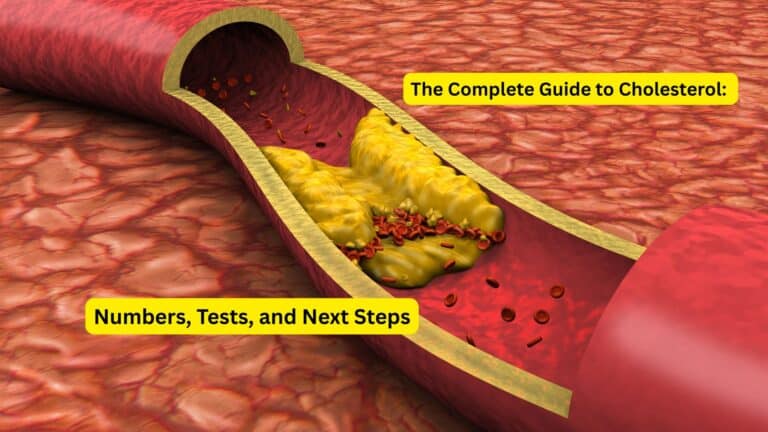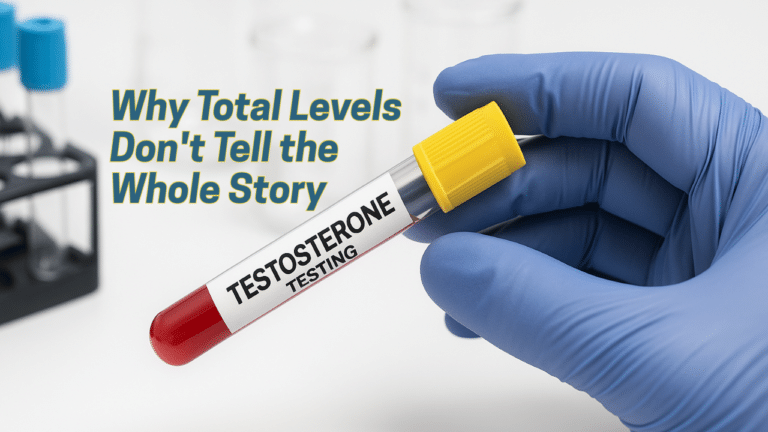Regular physical activity has long been recognized as a cornerstone of good health, but its relationship with immune function is more nuanced than many people realize. While exercise can strengthen your body’s defenses against illness, the intensity and duration of your workouts play crucial roles in determining whether physical activity enhances or compromises your immune system. Understanding this delicate balance can help you design a fitness routine that maximizes immune protection while minimizing the risk of exercise-induced immune suppression.
The Exercise-Immunity Curve Explained
The relationship between exercise and immune function follows what scientists call the exercise-immunity curve, a concept that reveals how different levels of physical activity affect your body’s ability to fight off infections and maintain optimal health. This curve demonstrates that moderate exercise enhances immune surveillance and increases natural killer cell activity, providing robust protection against pathogens and reducing inflammation throughout the body.
The Sweet Spot of Moderate Activity
Research published in leading scientific journals shows that moderate exercise enhances immune surveillance and NK cell activity, creating an optimal environment for immune function. When you engage in activities like brisk walking, cycling, or light jogging at 50-70% of your maximum effort, your body mobilizes white blood cells more effectively and improves the circulation of immune cells throughout your system.
This moderate level of activity triggers beneficial adaptations without overwhelming your body’s recovery mechanisms. The immune system responds by becoming more efficient at detecting and eliminating threats, while simultaneously reducing chronic inflammation that can compromise long-term health.
When Exercise Tips the Balance
However, the exercise-immunity relationship isn’t linear. High-intensity or prolonged exercise can trigger what researchers call the “open window” theory of immune suppression. During this vulnerable period, which can last several hours after intense training, prolonged exercise can trigger temporary immunosuppression, leaving athletes and fitness enthusiasts more susceptible to infections.
This phenomenon occurs because intense exercise places significant stress on the body, leading to elevated levels of stress hormones like cortisol and catecholamines. These hormones, while necessary for performance, can temporarily suppress immune cell function and alter the balance of inflammatory markers in your bloodstream.
How Moderate Exercise Strengthens the Immune System
Moderate exercise acts as a powerful immune system enhancer through several interconnected mechanisms. When you engage in regular, moderate-intensity activity, your body responds by mobilizing leukocytes (white blood cells) more efficiently, enhancing antibody responses, and creating an anti-inflammatory environment that supports overall immune competency.
Cellular-Level Benefits
During moderate exercise sessions lasting 30-45 minutes, your immune system experiences a controlled activation that strengthens its ability to respond to actual threats. Natural killer cells, which play a crucial role in detecting and destroying infected or abnormal cells, become more active and effective. This enhanced immune surveillance helps your body maintain better protection against viruses, bacteria, and other pathogens.
The anti-inflammatory effects of moderate exercise are equally important. Regular activity helps reduce systemic inflammation by promoting the release of anti-inflammatory cytokines while simultaneously decreasing pro-inflammatory markers. This balanced inflammatory response is essential for maintaining immune health and preventing chronic diseases associated with excessive inflammation.
Practical Implementation
The most effective moderate exercise routine for immune support typically includes activities performed at 50-70% of your maximum heart rate for 30-45 minutes, three to four times per week. Examples include brisk walking, recreational cycling, swimming at a comfortable pace, or light jogging. These activities provide sufficient stimulus to enhance immune function without triggering the stress responses associated with more intense training.
When Exercise Becomes Too Much
While regular physical activity supports immune health, there’s a point where exercise intensity and duration can become counterproductive. Understanding the signs and mechanisms of exercise-induced immune suppression can help you avoid the pitfalls of overtraining while maintaining an active lifestyle.
The Physiological Stress Response
Intense and prolonged exercise can induce temporary immunosuppression in athletes, characterized by significant changes in immune cell populations and inflammatory markers. During high-intensity exercise, your body releases large amounts of stress hormones, which can suppress lymphocyte function and alter the normal balance of immune cells in your bloodstream.
This acute stress response also triggers the release of pro-inflammatory cytokines, which can remain elevated for hours after exercise completion. While these responses are part of the body’s normal adaptation to stress, excessive or frequent exposure can lead to chronic immune dysfunction and increased susceptibility to illness.
Recognizing Overtraining Syndrome
The signs of exercise-induced immune suppression often manifest as overtraining syndrome, a condition characterized by persistent fatigue, declining performance, and increased frequency of minor illnesses. Athletes experiencing this condition may notice they’re catching colds more frequently, taking longer to recover from illnesses, or feeling constantly run down despite maintaining their training schedule.
Other warning signs include persistent muscle soreness, mood changes, sleep disturbances, and elevated resting heart rate. These symptoms indicate that your exercise routine may be overwhelming your body’s recovery capacity and compromising your immune system’s ability to maintain optimal function.
High-Intensity Training and Immunity
High-intensity exercise presents a complex picture when it comes to immune function, with both immediate challenges and potential long-term benefits. While acute high-intensity sessions can temporarily stress the immune system, consistent training at higher intensities may actually enhance immune resilience through adaptive mechanisms.
Short-Term Immune Stress
Research demonstrates that high-intensity exercise induces an acute immune stress response, increasing cell-free DNA release from immune cells and elevating pro-inflammatory cytokines in the bloodstream. This immediate response reflects the significant physiological stress placed on the body during intense exercise sessions.
During these acute phases, immune cell function can be temporarily compromised, with studies showing alterations in white blood cell counts and reduced immune cell responsiveness. This temporary suppression creates the “open window” of vulnerability that makes athletes more susceptible to infections in the hours following intense training sessions.
Adaptive Benefits Over Time
Despite these acute challenges, consistent high-intensity training can lead to beneficial long-term adaptations in immune function. After approximately 12 weeks of regular high-intensity training, high-intensity training reduces resting levels of inflammatory cell-free DNA, suggesting improved baseline immune function and reduced chronic inflammation.
Emerging Applications
High-intensity interval training (HIIT) is showing promise in specialized applications, particularly in recovery from post-viral conditions. High-intensity interval training shows rapid physiological adaptations, which may be beneficial in managing post-viral syndromes such as long-COVID. However, these protocols require careful medical supervision and individualized approaches to ensure safety and effectiveness.
Monitoring Immune Health in Active Individuals
For active individuals who want to optimize their exercise routines for immune health, monitoring specific biomarkers can provide valuable insights into how their bodies respond to different training intensities and volumes. Modern laboratory testing makes it possible to track immune function objectively and adjust exercise programs accordingly.
Key Immune Markers
Several laboratory markers can help assess immune status in response to exercise. The neutrophil-to-lymphocyte ratio (NLR) and platelet-to-lymphocyte ratio (PLR) are emerging tools to monitor immune status in response to exercise, providing insights into inflammatory balance and immune cell populations.
Additional markers that can be valuable for active individuals include vitamin D levels, which play crucial roles in immune function, and inflammatory markers like C-reactive protein (CRP). These tests can help identify nutritional deficiencies or excessive inflammation that might compromise immune health or exercise recovery.
Personalized Training Adjustments
Walk-In Lab offers convenient access to immune health testing that can help active individuals make informed decisions about their exercise routines. By tracking these markers over time, you can identify patterns that indicate when your training load is supporting or compromising your immune function.
Regular testing allows for personalized adjustments to training intensity, recovery protocols, and nutritional support strategies. This data-driven approach helps ensure that your exercise routine continues to enhance rather than compromise your immune health.
Practical Exercise Guidelines for Immune Support
Creating an exercise routine that supports optimal immune function requires balancing intensity, duration, frequency, and recovery. The key is finding the sweet spot where physical activity enhances immune surveillance and reduces inflammation without triggering excessive stress responses.
Balanced Training Approach
An effective immune-supportive exercise routine should combine aerobic activities with resistance training while prioritizing adequate recovery between sessions. Aim for moderate-intensity aerobic exercise lasting 30-45 minutes, three to four times per week, supplemented with two to three resistance training sessions that focus on major muscle groups.
This combination provides comprehensive fitness benefits while maintaining the moderate intensity level that research shows is most beneficial for immune function. The aerobic component enhances cardiovascular health and immune cell circulation, while resistance training supports muscle mass and metabolic health without overwhelming recovery capacity.
Recovery Integration
Recovery is not optional when designing an immune-supportive exercise program – it’s an essential component that allows your body to adapt positively to training stress. Adequate sleep, typically 7-9 hours per night, is crucial for immune function and exercise recovery. Poor sleep can negate many of the immune benefits of regular exercise.
Nutrition plays an equally important role, with adequate protein intake supporting muscle recovery and immune cell production. Hydration is also critical, as even mild dehydration can impair immune function and exercise performance. Stress management techniques such as meditation, yoga, or simple breathing exercises can help modulate the stress hormone responses that might otherwise compromise immune health.
Special Considerations
Older adults and individuals with chronic health conditions may need modified approaches to exercise and immune health. Age-related immune decline (immunosenescence) means that older adults may benefit from more conservative exercise intensities while still maintaining regular activity. The focus should be on consistency and functional movement rather than high-intensity performance.
Individuals recovering from illness or dealing with chronic conditions should work with healthcare providers to develop appropriate exercise protocols. In these cases, very gentle activities like walking or light stretching may be more appropriate initially, with gradual progression as health and fitness improve.
Frequently Asked Questions
How does moderate exercise affect the immune system?
Moderate exercise enhances immune function by mobilizing white blood cells, improving immune surveillance, and promoting anti-inflammatory responses. Regular moderate activity increases natural killer cell activity and helps maintain optimal immune balance without triggering stress responses that can suppress immunity. The ideal intensity is typically 50-70% of maximum effort for 30-45 minutes, three to four times per week.
Can high-intensity exercise weaken immunity?
Yes, high-intensity or prolonged exercise can temporarily suppress immune function through what’s known as the “open window” theory. During this vulnerable period lasting several hours after intense exercise, elevated stress hormones and inflammatory responses can reduce immune cell effectiveness and increase susceptibility to infections. However, regular high-intensity training can lead to positive long-term immune adaptations.
What is the exercise-immunity curve?
The exercise-immunity curve describes the relationship between physical activity and immune function, showing that moderate exercise enhances immunity while sedentary behavior and excessive exercise can compromise immune health. The curve demonstrates a sweet spot of moderate activity that provides optimal immune benefits without triggering suppressive stress responses.
How often should I exercise for immune benefits?
For optimal immune support, aim for moderate-intensity exercise three to four times per week, with each session lasting 30-45 minutes. This frequency provides consistent immune enhancement while allowing adequate recovery time. Include both aerobic activities and resistance training, and prioritize recovery through proper sleep, nutrition, and stress management.
Are there lab markers to track exercise’s effect on immunity?
Yes, several laboratory markers can help monitor how exercise affects your immune system. Key markers include the neutrophil-to-lymphocyte ratio (NLR), platelet-to-lymphocyte ratio (PLR), inflammatory markers like C-reactive protein, and vitamin D levels. These tests can help identify whether your exercise routine is supporting or compromising immune function.
Conclusion
The relationship between exercise and immunity follows a delicate balance where moderate activity strengthens immune defenses while excessive intensity or insufficient recovery can temporarily compromise immune function. By understanding the exercise-immunity curve, you can design a fitness routine that enhances your body’s natural defense systems while minimizing the risk of exercise-induced immune suppression.
The key is finding your personal sweet spot through moderate-intensity activities performed regularly, combined with adequate recovery and proper attention to sleep, nutrition, and stress management. For those who engage in higher-intensity training, careful monitoring of recovery markers and immune status can help ensure that exercise continues to support rather than compromise overall health.
Remember that individual responses to exercise vary significantly, and what works optimally for one person may need adjustment for another. Consider monitoring your immune health through laboratory testing to personalize your approach and make data-driven decisions about your exercise routine.
Ready to optimize your exercise routine for immune health? Order your immune health test at Walk-In Lab to track key markers like neutrophil-to-lymphocyte ratio, inflammatory markers, and nutritional status. Understanding how your body responds to exercise can help you find the perfect balance between fitness and immunity.
This article is for informational purposes only and is not intended as medical advice. Please consult with a healthcare provider before making significant changes to your exercise routine, especially if you have underlying health conditions.






